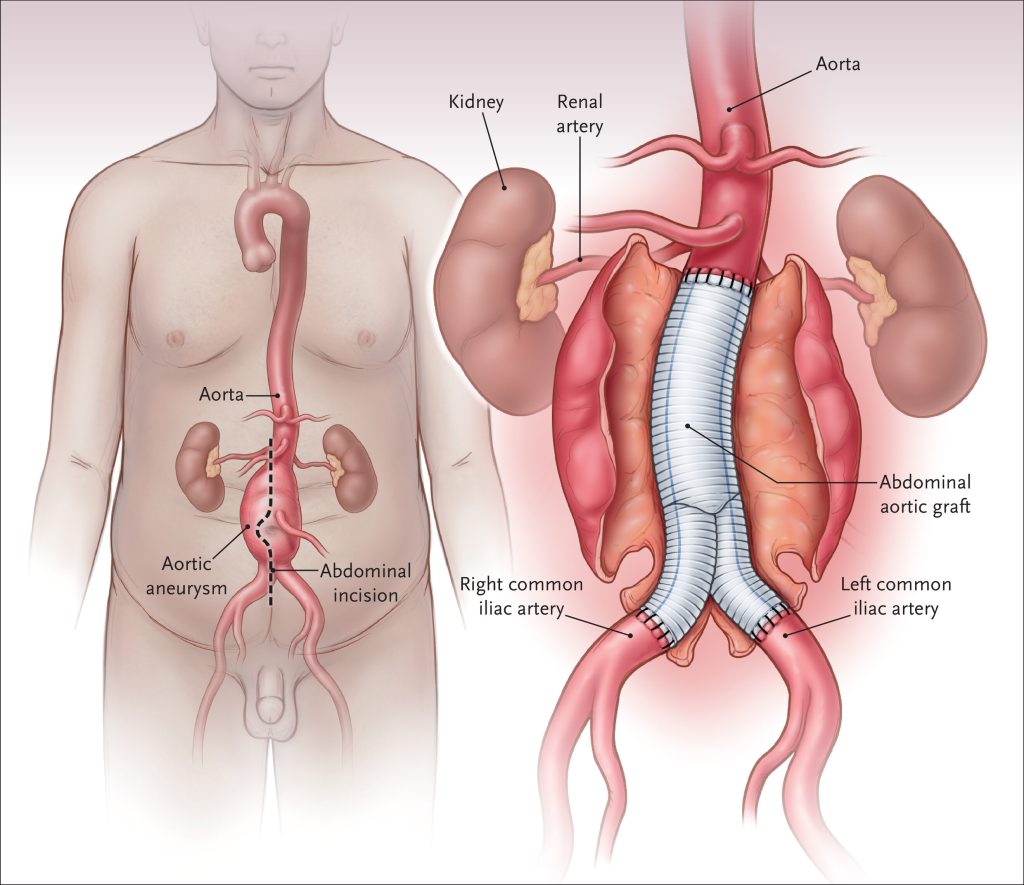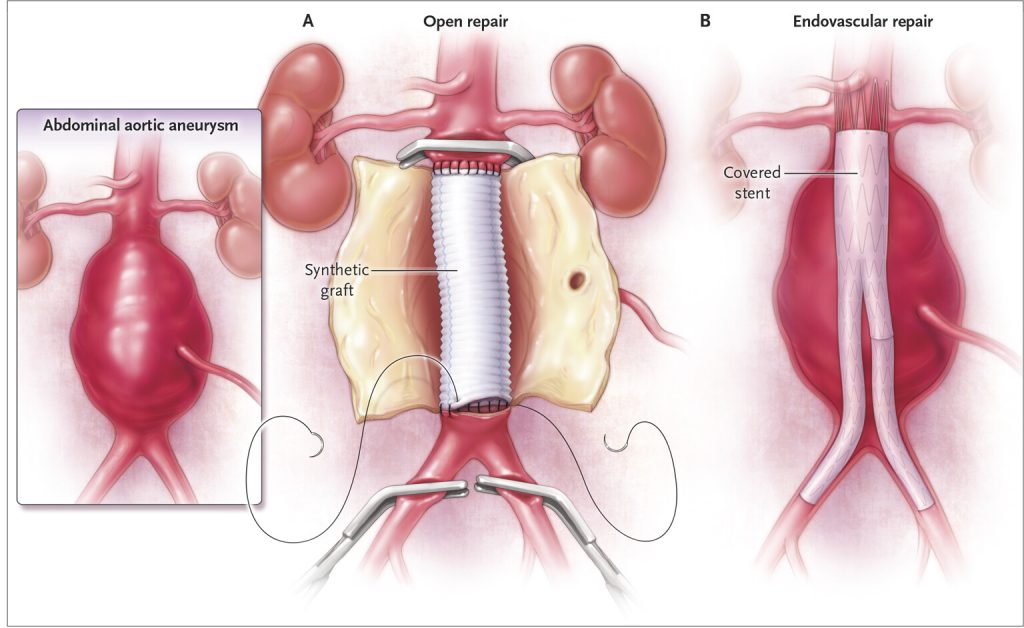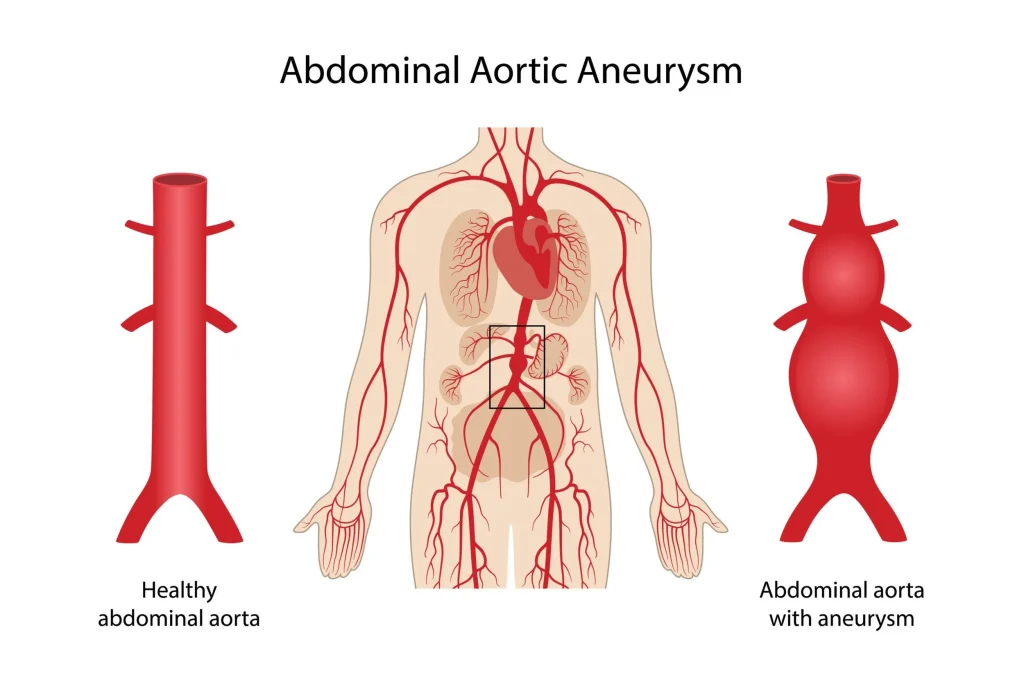What is an Abdominal Aortic Aneurysm?

An abdominal aortic aneurysm (AAA) is a condition where the aorta—the largest blood vessel in the body—becomes weakened and bulges in the abdominal region. The aorta carries oxygen-rich blood from the heart to the rest of the body, and when its walls weaken, they may expand like a balloon.
AAA can be life-threatening if it ruptures, leading to severe internal bleeding and possibly death. Early detection is crucial, as many people don’t experience symptoms until the aneurysm is dangerously large or bursts.
What Are the Symptoms of AAA?

Small aneurysms often do not cause symptoms, making regular check-ups important. However, as an aneurysm grows, it can lead to noticeable signs, especially when it is close to rupturing.
Common Symptoms of AAA:
- Deep, persistent abdominal pain → Often felt near the belly button or lower stomach.
- Back pain → Can radiate from the abdomen to the lower back or sides.
- Pulsating sensation in the abdomen → A noticeable throbbing in the stomach area.
Signs of a Ruptured Aneurysm (Medical Emergency )
If an AAA bursts, it can lead to rapid blood loss, which requires immediate medical attention. Signs include:
- Sudden, severe abdominal or back pain (sharp and intense).
- Dizziness, fainting, or loss of consciousness (due to internal bleeding).
- Cold, clammy skin and rapid heartbeat (signs of shock).
- Low blood pressure (hypotension) leading to weakness or confusion.
A ruptured aneurysm is a medical emergency and can be fatal without urgent surgery. If you or someone else experiences these symptoms, call emergency services immediately.
What Causes an Abdominal Aortic Aneurysm?

AAA develops gradually over time due to weakening of the aortic walls. Several factors increase the risk of this condition.
Common Causes & Risk Factors:
- Atherosclerosis (Hardening of Arteries)
- Fatty deposits build up in the aorta, making the walls weak and prone to bulging.
- High Blood Pressure (Hypertension)
- Increased pressure on the artery walls causes stress and weakening over time.
- Smoking 🚬
- One of the biggest risk factors! Smoking damages blood vessels and weakens the aortic walls.
- Genetics & Family History
- If a parent or sibling had AAA, your risk increases significantly.
- Aging
- Most cases occur in people over 65 years old.
- Gender
- Men are at a much higher risk than women.
- Infections or Inflammation
- Certain infections or inflammatory diseases may contribute to weakened artery walls.
- Trauma or Injury
- Severe blunt force trauma to the abdomen (e.g., car accidents) can sometimes cause aneurysms.
How is AAA Diagnosed?
Since early-stage AAAs are often silent, doctors use imaging tests to detect them, especially in people with risk factors.
Common Diagnostic Tests:
- Ultrasound (First-line test)
- A simple, non-invasive scan that detects the size and shape of the aneurysm.
- CT Scan (Computed Tomography)
- A detailed imaging test that provides a 3D view of the aneurysm.
- MRI (Magnetic Resonance Imaging)
- Used for a more detailed look at the aorta and surrounding structures.
- Angiography
- Uses contrast dye to visualize blood flow and potential blockages in the aorta.
Who Should Get Screened?
- Men aged 65+ who have smoked (highest risk group).
- Anyone with a family history of AAA.
- People with high blood pressure, high cholesterol, or heart disease.
Early detection through screening can prevent complications and save lives.
How is an Abdominal Aortic Aneurysm Treated?
The treatment approach depends on the size and growth rate of the aneurysm.
1. Small Aneurysms (Less than 5 cm & No Symptoms)
- Regular Monitoring → Doctors may suggest watchful waiting with ultrasound check-ups every 6–12 months.
- Lifestyle Changes to slow progression:
- Quit smoking 🚭
- Control blood pressure & cholesterol
- Exercise regularly
- Eat a heart-healthy diet
2. Large or Fast-Growing Aneurysms (Over 5 cm or Rapid Expansion)
If an aneurysm is big or growing quickly, surgery is needed to prevent rupture.
Surgical Treatment Options:
- Open Abdominal Surgery
- The damaged aorta section is removed and replaced with a graft (artificial tube).
- Longer recovery (~6 weeks), but durable results.
- Endovascular Aneurysm Repair (EVAR) (Less Invasive)
- A stent-graft is inserted via catheter through the groin to reinforce the weakened aorta.
- Shorter recovery time, but may require future procedures.
Which surgery is better?
- Younger, healthier patients → Open surgery may be recommended for long-term durability.
- Older patients or high-risk cases → EVAR is preferred due to lower surgical risks.
Complications of AAA
If left untreated, an abdominal aortic aneurysm can lead to serious complications, including:
- Rupture (Most Dangerous!) → Can cause massive internal bleeding, often fatal.
- Blood Clots → Pieces of clots can travel to the legs or other organs, causing blockages.
- Compression of Nearby Organs → A large aneurysm may press against other structures, leading to pain or digestive issues.
Living with an Abdominal Aortic Aneurysm
Even if you have an AAA, you can reduce your risk of complications with these steps:
Quit smoking – The #1 way to slow aneurysm growth.
Control blood pressure – Take prescribed medications if needed.
Exercise regularly – But avoid heavy lifting.
Eat a heart-healthy diet – Limit salt, processed foods, and unhealthy fats.
Manage cholesterol & diabetes – Keep them under control.
Follow up with your doctor – Regular ultrasounds to track aneurysm growth.


